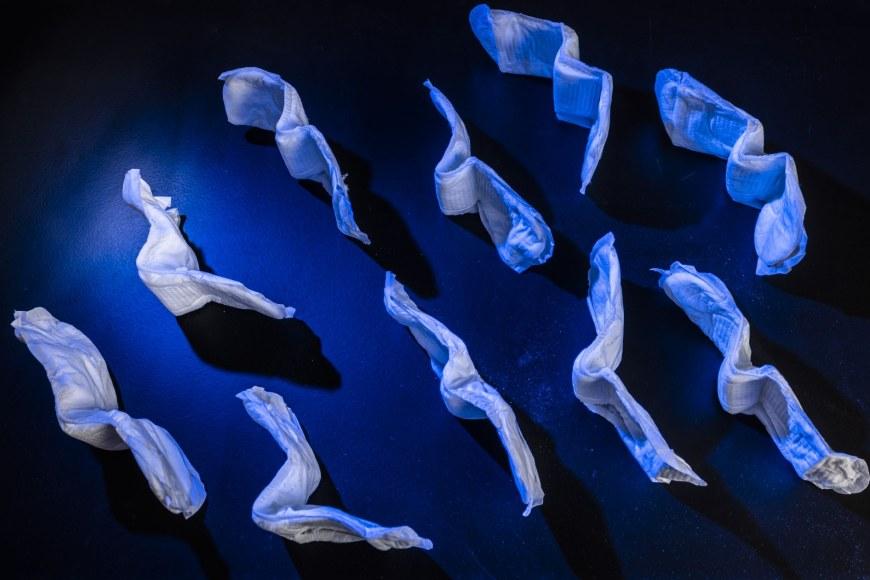Breaking the taboo of incontinence

“We all have a bladder and bowels, and how they function has a major effect on our daily lives. Continence is a topic that touches all of us, but many people with incontinence issues are suffering in silence due to embarrassment,” says Tiina Vaittinen, postdoctoral research fellow working at Tampere University.
Intrigued by this hidden epidemic, Vaittinen delved into the topic that revolves around incontinence pads that are also known as adult diapers.
The research interests of Tiina Vaittinen focus on themes that are surrounded by strong taboos and stigmas. She currently leads a research project titled Emergent un/sustainabilities of care: The global political economy of the adult incontinence pad. The project explores the political and economic realities associated with incontinence pads. It receives funding from the Academy of Finland and Kone Foundation.
“Adult diapers are rarely talked about in other than amused or appalled tones. Having compassion and maintaining dignity are essential in providing good continence care, but we also cannot talk about these aspects if the topic provokes either a fit of laughter or a shiver of horror.”
“It is important to study this common yet often ignored issue to break the taboo and create a positive ripple effect that could make a significant impact on the lives of many,” Vaittinen points out.
Incontinence problems are common among people of all ages
Incontinence, or the unintentional leakage of urine or stool, is surprisingly common. According to Vaittinen, up to 51% of women and 15% of men have problems with bladder or bowel control.
“It is a myth that incontinence only affects older people. For example, the incidence of bowel diseases, such as inflammatory bowel disease (IBD), is increasing rapidly among young people, too.”

Vaittinen notes that incontinence is not a disease but a symptom that may be caused by a variety of reasons, such as a range of chronic illnesses, medical treatment (such as cancer treatment), different medications, obesity and neurological conditions. It can also frequently occur after pregnancy and childbirth.
“While most cases can be treated, unfortunately the condition is sometimes left untreated. With incontinence being such a hidden problem, little is known about it. Primary care providers do not necessarily always know how to treat it.”
According to Vaittinen, people who seek treatment to incontinence problems may be routinely advised to use incontinence pads, but pads should not be the first option because the condition can often be cured or at least mitigated. For example, incontinence after childbirth could be effectively prevented with pelvic floor physiotherapy.
Broad problems, multiple solutions
Improved treatment would also reduce the demand for and thereby the environmental impact of incontinence pads. It is important to make continence care more sustainable, for example, by tailoring pad usage to individual needs, Vaittinen finds.
“The pads that are currently available on the market are highly absorbent. A lot of material goes into the pads, which therefore have a large ecological footprint. All cases of incontinence cannot be cured, but the environmental impact could be minimised by always selecting a product that meets users’ distinct needs. Luckily good practices already exist along these lines.”

As Vaittinen says, we already have the technology to manufacture biodegradable pads, but they would still be too expensive to enter the market.
Besides the environmental cost of incontinence pads, there are equality issues to consider. For example, in Finland, eligible persons can gain access to state-funded incontinence products.
“On a global scale, however, there are major inequalities in terms on access to incontinence care and the cost of incontinence products is beyond the reach of many.”
The roots of this stigma can be traced back to the idea of a civilised person.
According to Vaittinen, one solution for improving incontinence care is to educate healthcare professionals about the condition. This training should provide everyone from practical nurses to physicians with the same fundamental knowledge of incontinence and its treatment.
“Breaking the silence is the key to raising awareness of incontinence not only among the public but also among healthcare professionals. As incontinence can be caused by such a broad range of underlying physical problems, there is also a variety of treatment options. But these options cannot be used if people do not know they exist.”
In the long run, these changes would result in a major reduction in public spending on incontinence products as well as help to break the stigma surrounding incontinence.
“The roots of this stigma can be traced back to the idea of a civilised person and perhaps even a fear of disability. What motivates me as a researcher is the chance to find solutions that hold promise to improve quality of life equally for all.”
Emergent Un/Sustainabilities of Care: The Global Political Economy of the Adult Incontinence Pad
- The project explores the practical, political and economic realities associated with incontinence pads with the aim of improving their overall sustainability.
- The project examines the issues and inequalities relating to incontinence products from multiple perspectives.
- The project is conducted in collaboration with users, suppliers and other interest groups.
- The goal is to pave the way for incontinence care that is not only of good quality but also environmentally and economically sustainable.
- The project carried out at Tampere University is funded by the Academy of Finland and Kone Foundation and runs from 2019 to 2024
Author: Nelli Peltonen








